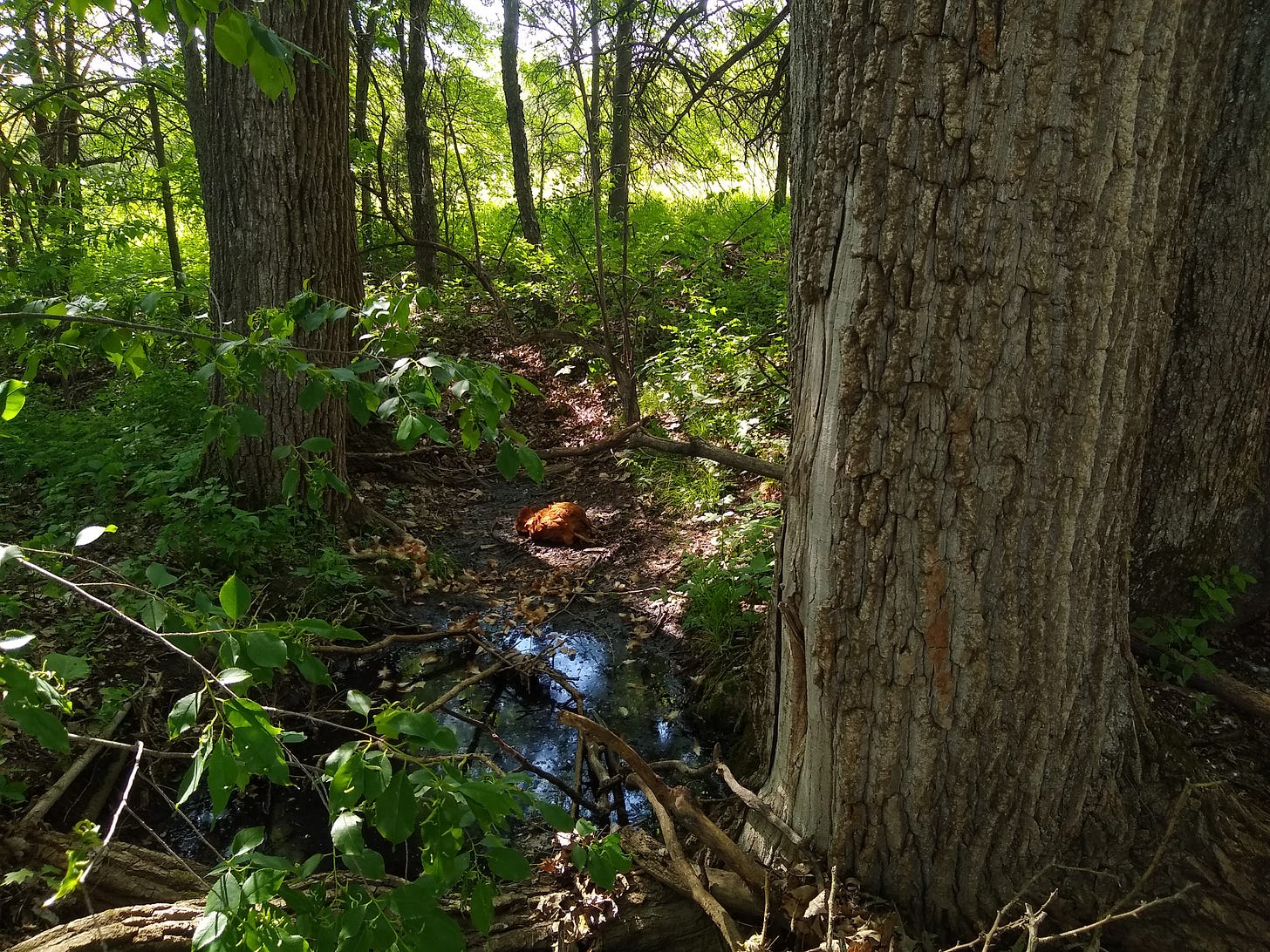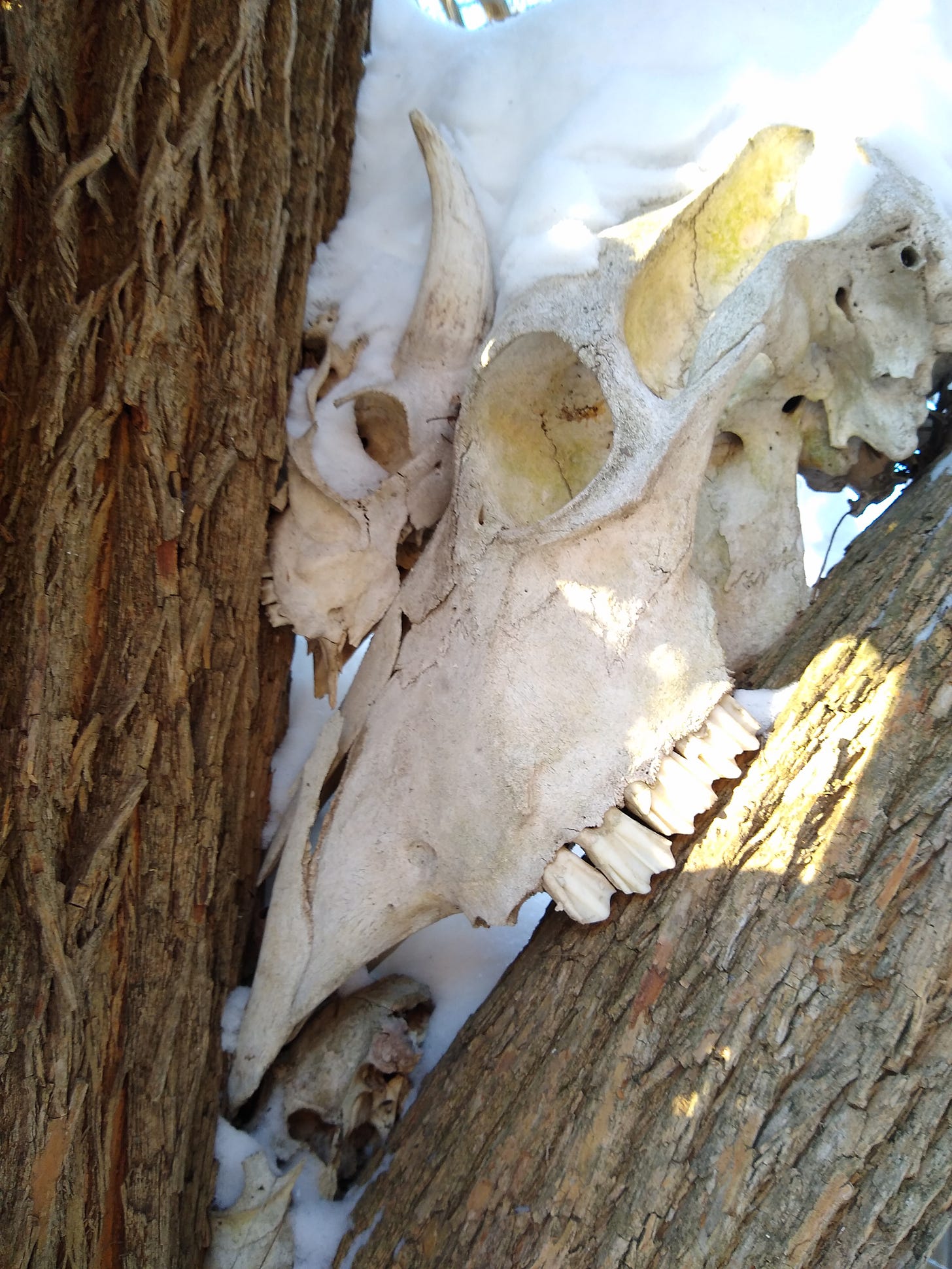Varmintry! Part I
Extirpation, Imbalance, and Stewardship
Dew jewels the threads of orb weaver webs cast across thick-stemmed forbs and hardened August grass. I clop through the night-dampened wands of goldenrod and spires of ironweed drizzled in mist, the prairie’s skin alive with wet tendrils and leaves that slap and my soaking shins. It is here, mid-slope and between steel fence and draw’s edge that I come parallel to a trail flecked with feathers and splattered with blood, leading off through the tromped down wake of nocturnal paws. Varmintry is afoot.
The road to acceptance of keystone predators in North America, broadly and regionally, has been fraught. While the image of wolves and cougars returning to a healing landscape captures the imagination of city-folk, whose yearning for wildness is understandable, predators, predation, and general varmintry carry a more complicated legacy out here in the boonies. And while the broad, urban-suburban cultural view of coyotes, bobcats, wolves and mountain lions may be one of respect or appreciation, undoubtedly fueled by public television documentaries and National Geographic, the presence and reemergence of these predators in rural, agrarian settings draws on deep cultural fears, perceptions of land and property ownership, and an entrenched colonial mindset –let alone the more common varmints like raccoons, foxes, ‘possums and skunks.
The urban/rural divide on predators (and predatory generalist omnivores) can be sharp. In recent years, ‘possums and raccoons have emerged as mascots for a certain urbane mindset– dumpster-diving punks and mischief-makers have taken the antics of scrappy oddball ‘possums and the charismatic banditry of “trash pandas” as totemic of our own class-based existence, seeing something of themselves in these resourceful underdogs that live on the discards of a bloated and wasteful culture– or so I reckon.
Also, these creatures have a strange cuteness, I will grant, though I contend that ‘possum’s do shed their brand of homely cuddliness at maturity when they become patchily pelted, hissing, bare-tailed freaks— a view tainted by my own limited human perspective I’ll grant, but my honest appraisal nonetheless. The raccoon, with its button nose, almost pleading saucer eyes, and expressive hands is a bit more palatable cuddle-buddy, in my opinion. I also find raccoons to be more palatable than ‘possums culinarily as well. As my granny used to say, “I don’t like ‘possum, it’s greezy”.
In fact, the cuteness factor of raccoons has lead to considerable ecological, agricultural, infrastructural and cultural damage in Japan, where a popular 1970’s anime “Rascal the Raccoon” led to importations of these native North American beasts. Raccoons, like all wild animals, generally make poor pets and they were largely released into a landscape where they encounter no natural predators, where they now raid crops, destroy thousand-year old Shinto temples, and further threaten the nearly decimated Tokyo salamander. Clearly, Japan is not the place for this species. But what is?
Meanwhile, here in Northeast Missouri where these critters rightly belong, raccoon hunting, along with coyote hunting, is a part of the current cultural tradition. There is a well-known truck I’ve seen throughout my decade-plus living in Scotland County, old and beaten, driven by an even older more beaten man, outfitted with high wattage spotlights, gun racks, and a bold “COON HUNTER” decal running the full-length of the rear windshield. I have met this man one time, and he, in fact, purports his only moniker to be Coon Hunter. There’s no need to ask Mr. Hunter what he likes to do in his free time. While our woodlands and riparian zones are crawling with raccoons that mostly mind their own business, pawing crayfish from pond banks and grasping at berries in the scrub, those times which humans come into contact with them are inevitably marked by malicious mischief: they raid feed barrels, kill poultry, or hole up in attics. In a county where the raccoon population may well surpass the human population, a few avid raccoon hunters may believe they are doing our community some good by spotlighting, treeing, pursuing, and ultimately popping off these marauders.
In the prior edition of this Almanac, I mentioned taking the necessary step in neutralizing one such problem varmint. It was not, and never is, an entirely unexamined action for me to take. Since that piece, I have trapped and shot six more raccoons, and it has given me much to consider, in regards to land ethics, the inherent colonial mindset of homesteading, and the seemingly complicated relationship between “regenerative” agriculture and predation.




